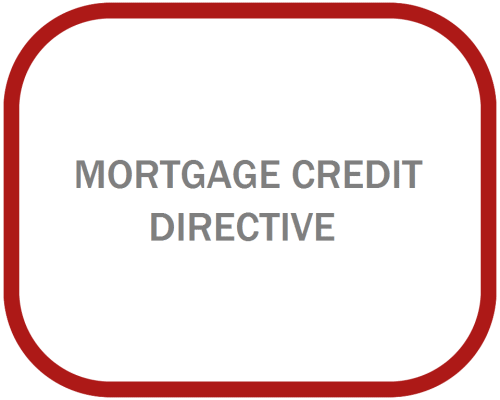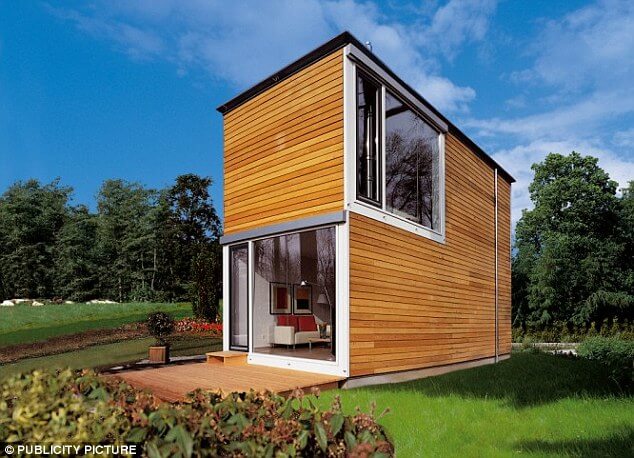Getting Security For Your Property
Property security is crucial for properties of all nature; both residential and commercial, public and private. Ensuring sufficient measures are implemented provides property owners with the peace of mind that their property is protected from vandals, intruders, trespassers and squatters. However, there are a wide range of potential measures that can be put into place for the security of properties and it can be difficult to choose from these.
The most common types of security tends to be separated into 2 distinct categories:
- Electronic security: such as alarms and Closed-Circuit Television cameras (CCTV)
- Physical security: such as fencing and barrier security.
Physical security can also include manned security including security guards, site marshals and guard dogs (source: Secure Site). There are advantages to using each type of security with each incurring different costs.
Because of the plethora of options around, it is crucial to understand some of the most common types of each category of security so your property, be it large or small, an office or a pub is suitably and adequately secured when it is vacant. It may be the case that you are in the process of building a new property, having just secured construction finance and you do not want the building site to be unprotected. There are a lot of potentially valuable items and assets on building sites that are appealing to burglars and trespassers.

Electronic Security
This category refers to any electronically powered form of security, of which there are many. Some of the most common types of electronic security are CCTV systems, alarms and lighting; all of which are powerful deterrents and preventers of unwanted visitors, vandals and trespassers.
CCTV Systems – These systems range from basic arrangements where there are just a few cameras that record, not needing to be checked until such time their footage is required to more complex systems that utilise motion detection technology and infrared night vision capabilities. Furthermore, CCTV cameras can be overt (visible to all) or covert [hidden]. The beauty of CCTV is that there are options for residential and commercial properties as well as for building sites. They are an effective way to secure prosecutions as any trespassers or potential burglars are caught on film to be handed to the relevant authorities.
Alarm Systems – Alarm systems are one of the most effective deterrents any site or property owner can utilise. Using motion detection; upon being set, any motion in the areas covered by the alarm sensors will set off the alarm, drawing attention to the site in question. Moreover, many alarm systems are monitored by alarm monitoring companies, sometimes alongside CCTV which allows them to alert the local police to any intruders. Just the site of an alarm box displayed on a property or site perimeter is a strong deterrent to burglars and intruders who tend to steer clear of properties and sites covered by alarm systems.
Physical Security
The most effective and cost-efficient methods of physical security tend to be barrier-related security which forms a physical barrier between any potential intruders and the site or property. Alternatively, for higher value properties and sites as well as those that are suited to it, having security guard, often with guard dogs is one of the strongest deterrents available.
Barrier Security – There are many types of fencing, hoarding and barriers that can be put in place to make intrusion and trespassing extremely difficult. For example, in the case of derelict or empty properties, a popular solution that isn’t too expensive is boarding up all windows and doors with steel or ply-wood panelling. Additionally, for sites where fly tipping, travellers and vehicular trespass are all possible, concrete bollards and hoarding can be implemented, making it impossible for the offending parties to enter without authorisation.
Manned Security – This is one of the most effective methods to protect a site or property; manned security will entail at least one security officer or marshal who will usually be trained to the minimum Home Office Standards (holding an SIA licence) being present on site. They may perform mobile patrols or them may man a static post such as the entrance or other vulnerable point of the site. Sometimes, and depending on the exact arrangement with the security provider, guard dogs may be provided to add an additional level of security.
What is Stamp Duty?
Stamp Duty or and-tax/residential-property-rates">Stamp Duty Land Tax (SDLT) as it is known, is a tax on the purchase of properties and land in the UK and Scotland. It is a one-off lump sum compulsory tax that must be paid within 30 days of completing on a property. For customers taking out bridging finance, it is important that they incorporate the cost of stamp duty into the mix when buying a property and doing any refurbishments or rent out to tenants.
In short, when it comes to stamp duty, the more expensive your property, the more you pay. If you want more than one property, the more you pay. Simple.
How Much Stamp Duty Will I Pay?
The amount you pay in stamp duty will depend on the value of the property you are buying, whereby the higher your spend, the most tax you pay. Following the Chancellor's Autumn Statement in December 2014, there has been a change to the traditional slab system which involved paying a single rate based on the property. Currently, we have a tiered structure which is more progressive and means you pay a portion based on every level.
Based on buying a property for £500,000:
Old system:
- 1% on a property between £125,000 and £250,000
- 3% on a property between £250,000 and £500,000
- So because the purchase price is over £250,000, you would have paid £15,000 in stamp duty.
New system:
- You pay nothing below £125,000, which is £0
- You pay 2% between £125,000 and £250,000, which is £2,500 (based on taxable sum of £125,000)
- You pay 5% on the value of the property above £250,000, which is £12,500 (based on taxable sum of £250,000)
So in total this means you'll pay £15,000 (£0+£2,500+£12,500).
The new stamp duty calculations, whilst they may seem the same for a property worth £500,000, it benefits those buying properties below this. For instance, a property worth £300,000 previously would have incurred a stamp duty fee of £9,000, under the new system would only cost £5,000.
Stamp Duty on Additional Properties
Anyone buying an additional property (in addition to their main residence) will be subject to a much higher stamp duty, provided that the value of the estate is more than £40,000. In some cases, the cost of stamp duty for a second property can be double the cost of the first property's stamp duty.
How Does Stamp Duty Work in Scotland?
The Scottish system does not refer to this tax as stamp duty anyway, following a reform by the Scottish Government in April 2015. It is now called Land and Buildings Transaction Tax and it still functions the same way as stamp duty - everyone has a set amount to pay based on buying a property or land costing more than £125,000.
The only difference with the Scottish system is the thresholds and percentages charged. See below:
UK: £0 - £125,000 (no fees)
Scotland: £0 - £145,000 (no fees)
UK: £125,000 to £250,000 (2%)
Scotland: £145,001 to £250,000 (2%)
UK: £250,000 to £925,000 (5%)
Scotland: £250,000 to £325,000 (5%)
UK: £925,000 to £1.5 million (10%)
Scotland: £325,000 to £750,000 (10%)
UK: £1.5 million+ (12%)
Scotland: £750,000 + (12%)
How To Pay Stamp Duty
Your solicitor that arranges your mortgage and property purchase will usually handle the stamp duty payment. They are usually very eager to get this paid for you which is why some solicitors will ask for the stamp duty money up front - and some will pay it after. By not paying your stamp duty within the 30 day window, you will be subject to the following fines:
| Length of delay | Amount of penalty |
|---|---|
| Documents late by up to 12 months | 10% of the duty, capped at £300 |
| Documents late by 12 to 24 months | 20% of the duty |
| Documents late by more than 24 months | 30% of the duty |
If you want to pay your stamp duty yourself, without a lawyer, you need to find your unique 11-digit reference number (UTRN) which can be found online or via your stamp duty return. You can then pay the HMRC by phone or online through their bank account. Payments can take up to 3 days, so you are recommended to get payment in nice and early to avoid any fines. There are also options to pay by cheque, post or credit card (this will incur a fee). You may be required to present a valid pay-slip if you wish to pay by cheque or post as verification.
Stamp Duty Calculators
A stamp duty calculator can give you a quick calculation based on the cost of your property. We recommend the following tools:
and-transaction-tax-calculator-wales">MoneyAdviceService Wales
and-and-buildings-transaction-tax-calculator-scotland">MoneyAdviceService Scotland
and-tax/#/intro">HM Revenue & Customs
Cost of Moving House Calculator
Other Costs To Be Aware Of
Whether working on a buy-to-let or developing a new property, stamp duty is not the only cost that you need to be conscious of. Other key costs include buildings and contents insurance which will allow you to cover the cost of any potential mishaps to your property development. This can involve any damage to the building by flood, fire, peril, vandalism, fly-tipping or similar. Your contents insurance will cover you for any furniture or items inside that are at risk of theft or even materials used to renovate the building.
Public liability insurance is necessary in case any work carried out by your buildings has a detrimental impact on any neighbours or passersby e.g a roof tile falls and hits the neighbour's car. Your liability cover accepts that you take responsibility and are willing to cover any repair or replacement costs.
When working on a development or property project, it is worth having an extra 10-20% in the kitty for any contingencies. This is extra money in case something goes wrong. For instance, what is you find asbestos on the property and have to hire a professional to remove this? What if there is very bad snow weather and this delays your project by several weeks, requiring you to pay your contractors more? You can never be sure when something unexpected will arise, so having that extra money spare can be crucial.
Other additional fees include the 'arrangement fees' charged by lenders who put together your application prior to funding your purchase. This is part of underwriting and carrying out checks to see if you are suitable for their financial product. This is usually around a 1% fee of the total loan value and is seen as a commitment between you and the lender which is why most lenders require this to be paid before the loan draw down.
Other fees include broker fees of around 2% which are collected upon the funding of a loan. With so many variations and bridging products available, a quality broker can help you source the best provider and save money with the most suitable rates and product.
Further fees include the cost of valuing your property which is required by the lender prior to funding your application. The cost of the valuation may vary based on the value of the property and each lender will use an independent surveyor. This is likely to be also be around 1% of the loan value, but will vary.
Finally, your solicitor will be crucial during the funding process, reviewing the loan contracts, reports from the surveyor and making sure all aspects run smoothly and are paid on time. You will incur solicitor fees, again, depending on who you use and the cost will depend on the complexity and scale of the project.
Property Renovations – What are the Options?
There are many ways in which a homeowner or landlord can renovate their property or group of properties to many ends. A common reason for improving a property is to increase its overall value. This may be prior to a future sale through which the seller wishes to acquire maximum yield or it may be to allow the property to increase its rental yield from tenants.
Whatever the reason for renovating, the options are endless, from quick and easy fixes that will improve the living space in the property to full and large-scale improvements and renovation works that alter and improve the structure, build and design of a part of or the entire property.
Before committing to any work or renovations is always important to assess a number of factors, including:
- Your budget
- Whether you'll be able to afford the works you wish to pursue with or without a loan
- What work you actually want done
- If you can afford a project manager who will help guide you through the entire process and take the weight off your shoulders
(source: Property Perfect Solutions)
It may be the case that you need to take out a specific property loan such as renovation finance to fund such a project (depending on its size and purpose), but the return on the investment may be well in excess of the investment.

Loft Conversions
Loft conversions are a sure-fire way improve the living space in your property, whilst certainly increasing the value of the property. Loft conversions can add potentially more than 20% to the value of your home. For example, if you have a property that is valued at £500,000, a loft extension could potentially increase its sell on value by £100,000 or more. With a loft conversion costing as little as £25,000 from many providers, the return on investment is hugely promising.
There are also various types of conversions and extensions to choose from. For example, if you have a detached property with enough roof space, you may qualify for a mansard conversion which restructures the entire roof and its shape, maximising the amount of space you gain from the works. The walls are built at a specific angle (7°) to ensure maximum space, with resistance to the elements, allowing water to drain off. Other popular loft conversion options include Victorian extensions for relevant properties and bungalow extensions.
Central Heating
Particularly in the UK, there are many times during the year where the central heating needs to be used for prolonged periods of time and this can occur anytime throughout the year in all seasons. Therefore, it is important to have a fully functioning and serviced central heating system. If you are selling your property, it is one of the first things a buyer will look at as it is likely to be well used.
According to This is Money, a new central heating system can add potentially more than 5% to a home’s value. In the case of the previous property valued at £500,000, this means that say the owner cannot afford a loft conversion, installing a new central heating system for around £3,000 could see as much as £25,000 added to the property’s value.
Add a Conservatory
Conservatory styles go in and out of fashion every year. However, one thing that stays constant is their ability to add a fair bit more living space to your property’s downstairs, whilst seeing as much as 5% added to the property’s value. Conservatories also allow a lot more light into the property in question which will make it much more appealing for buyers, particularly those with children who will be conscious of making sure their children receive their vitamin D fix.
The only downside of a conservatory is that you will need to be willing to give up a few metres of garden space to accommodate the new addition to your property. However, this is usually a secondary concern for many homeowners as the value added outweighs the negative feelings around giving up a bit more garden space.
Mortgage Credit Directive Explained
The Mortgage Credit Directive is a legal framework that was put together by the EU to conduct rules for any individual, firm or introducer offering first charges, second charge consumer buy to let mortgages on residential property in the UK. The new legislation was implemented by the Financial Conduct Authority on 21st March 2016.
The new regulation treats first and second charge mortgages equally - so whilst second charge loans used to fall under consumer credit, now any businesses, lenders or brokers offering this service must be authorised and hold the correct permissions for mortgages. For second charge customers, it means that they must now go through the more thorough checks associated with getting a mortgage, rather than a standard loan.
The MCD applies to credit agreements that are secured by a residential mortgage and to credit agreements used to acquire or retain property rights in land or in an existing or projected building. The rules are applicable to the following stakeholders involved in mortgages and bridge finance:
- Credit/lenders
- Intermediaries/brokers/introducers
- Appointed sales representatives
The directive was set up by the EU as part of the G20 commitment to improve the conditions and underwriting of credit agreements relating to immovable residential property (Source: Wikipedia). The decision was aimed to safeguard and prevent irresponsible lending and borrowing in the mortgage markets that caused havoc in the US during the housing crisis of 2006 to 2008, perfectly portrayed in the film "The Big Short."

Overview
The Mortgage Credit Directive sets out some common rules for mortgage lenders and brokers to follow. In doing so, this should create a residential market that better informs customers about the real costs of a mortgage and allow them to compare effectively between competitors. There is a key aspect to reflect on the mortgage contract before going ahead and this is aimed to protect mortgage applications from unfair and misleading practices by firms.
Key Features
The following are adapted from The Government's Guide of EU Mortgage Credit Directive.
Before the mortgage contract is completed, applicants will be provided with a European Standardised Information Sheet (andbook.fca.org.uk/handbook/MCOB/5A/Annex1.html?date=2016-03-21#DES62">ESIS). This is similar to the pre-contractual information that is given to most mortgage applicants across Europe but the ESIS is more detailed.
It includes a seven-day reflection period for the borrower to decide whether or not they want the loan and the EU member state can decide whether to administer this in the pre-sale or post-sale period.
The document includes the impact of interest rates including the Annual Percentage Rate of Charge (APRC) and offers example monthly payments in case they rise to the highest level in the past 20 years. This is a way of saying that 'this is the highest you could pay' in extreme circumstances.
The ESIS must be given in good time before the closing of the credit agreement allowing the customer to compare other rates and ask for third party advice.
Annual Percentage Rate of Charge (APRC)
Part of the ruling of the directive means that customers are presented with the Annual Percentage Rate of Charge (andbook.fca.org.uk/handbook/MCOB/10A/1.html?date=2016-06-30">APRC) and this should allow borrowers to do the following:
- See the whole cost of the mortgage and all fees
- How much the mortgage would cost if you kept it for the full loan term i.e 5 years, 10 years 25 years etc
- Compare effectively against other similar mortgage products.
Example of APRC: Imagine you want to borrow £500,000 with a 25-year mortgage. Halifax charges 1.14% on a two-year fixed rate deal but once the two year period ends, you will be subject to paying the standard variable rate of 4.99%. Therefore as part of the new regulations, the APRC shows you the full cost for the entire loan term as though it were 25 years, giving you an interest rate of 4.6%.
So ultimately the APRC shows you what you would be paying if you stayed with the same mortgage agreement for the entire loan period. However, this is unlikely as people realise that they can save massively by remortgaging at the end of the introductory period. So it is important for applicants and borrowers to look at the introductory rate first, which in this case is 1.14%.
Binding Offers
Mortgage lenders are now required to make a binding offer when providing a mortgage contract. A binding offer is when a mortgage provider draws up a contract stating the terms of the agreement and willingness to lend. It is part of a legal contract but does not become officially legally binding in a court of law unless the borrower accepts and signs the contract. It is common for binding offers to remain open some time to allow the borrower to make a decision and also consider other alternatives.
7 day Reflection period
Customers now have a 7-day reflection period where they can think and decide if the mortgage agreement is right for them. During this time, they can also investigate and compare other deals available. Since this was introduced by the EU, all member states can decide whether they introduce the 7-day period pre-sale or post-sale of the mortgage agreement, or even a combination of the two.
Tying and Bundling
The Directive has strict rules on lenders that want to 'tie' or 'bundle' additional products or services with the credit agreement. This has usually been offered by lenders to diversify and compete with other companies but can also lead to less mobility for customers and the feeling of being tied down. Therefore, the new rulings aim to limit bundling that can have a negative impact on the borrower but also keep anything which may be beneficial.
Property Valuations
Whilst most lenders and brokers already encouraged property valuations prior to forming credit agreements, it is now a requirement to have a valuation that is internationally recognised by the likes of the International Valuation Standards Committee and the Royal Institution of Chartered Surveyors.
Foreign Currency
There are now measures in place to protect those that are applying for loans in a foreign currency. Since exchange rates can fluctuate massively over a mortgage term that lasts several years, there is now an effort to safeguard borrowers from exchange rate risks.
Assessing a Customer's Creditworthiness
Additional guidance has been issued for lenders to assess a customer's credit prior to engaging in a mortgage contract. This can be through the use of credit checking via a credit reference agency such as Experian, Equifax or CallCredit.
The customers’ ability to refinance the credit agreement should be assessed and verified before the conclusion of the credit agreement. The assessment should also reflect on other factors that may inhibit their repayment of a loan such as number of dependents, income, debt to loan ratio and other commitments. Lenders and brokers must look beyond the fact that investing and purchasing a property can generate more income and value and this should not be an excuse for giving credit.
Allow Early Repayment
Whilst already common with most mortgage lenders and providers, customers must now always be given the option to repay their loan early, before the credit agreement ends. In fact, the ability to clear their debts early can play quite a big role when comparing the different rates and cost of a loan. The Mortgage Credit Directive believes that the option to repay early promotes healthy competition in the industry and financial stability within the sector.
Accidental Landlords
The MCD includes new rules if you suddenly become an accidental landlord such as inheriting a property or needing to let out your primarily residence.
This is the first time ever that accidental landlords will be regulated by the Financial Conduct Authority which implies much stricter income and affordability assessments than previously, as though you were applying for a typical mortgage.
The MCD has also brought in new rules if you’re an ‘accidental’ landlord, for example if you’ve inherited a property, or if you plan to let out a property that you have previously lived in as your main home.
However, if you are professional landlord with a limited company and own more than one buy-to-let property, you will continue to fall outside the scope of the FCA. So if you are an accidental landlord, this may be an option to take to limit your compliancy needs.
What About Commercial Property?
The MCD totally excludes commercial property that is used for purchase or buy-to-let. This includes office blocks, shops on the high street, gyms, schools and more.
The new legislation also excludes properties that are 'mixed use' provided that the property is used more for commercial than residential reasons. An example of this is an office building with a flat above it.
The directive also excludes any contract for the purposes of a person's business, trade or professional, assuming that the borrower is not acting as the consumer.
What is Modular Housing?
We recently wrote an article on how the Ealing council was using shipping containers to resolve their housing crisis. Using makeshift containers and portacabins to address the short-term housing needs is a type of modular housing, a craze that is sweeping the UK and redefining how the world builds property.
Modular Housing refers to prefabricated buildings that are made up of different modules and put together. Think of them as big lego pieces to construct a property. Modular homes are typically very small and only used as a short-term residence and way of providing lodgers with the essential living items. Examples of those using modular housing include:
- Soldiers on army bases
- Nurses on hospital sites
- Construction workers on large building sites
- Schools and classrooms
Also known as "prefab homes" or "container homes" they offer a new dimension to the construction world because they are made off site, typically in a warehouse, so you don't have to worry about being delayed by weather conditions. In addition, they take only a few days or weeks to build, speeding up the process by several months or years compared to a regular build.
The constructions are created by the use of computer aided designed (CAD) and the use of 3D printing is helping make great advances in this space. (Source: The Guardian)
Given the fast turnaround and small space requirements, the UK Government has pledged to build 100,000 new modular homes by the year 2020. (Source: The Daily Mail). This is part of Theresa May's larger scale project to add 1 million new homes in the next 3 years.
What Are The Benefits of Modular Housing?
Built in a factory: Being built in a climate controlled area is a huge advantage over traditional stick-built homes. There are no delays due to planning permission or bad weather, meaning that modular buildings can be worked on all year round. Each section moves through the next stage of quality control until they are ready to be transported to the building site and then assembled with cranes. A great example of this was shown in a recent HSBC advert below:
Quick turn around: Modular homes can be built in a factory environment in up to 2 weeks, which is significantly faster than the average home which can take up to a year. It typically takes 2 to 4 weeks for a local builder to complete the home on site once it is delivered, however, this can be shortened with the help of a team.
Energy efficient: The building process is very energy efficient, making use of green materials where possible and allowing people to save on their heat and electricity costs. One of the biggest advantages is that there is no waste to the local environment and above all, no noise to disturb local residents compared to regular site builds.
Help housing: Where housing is scarce or there are not enough properties to service the demand, modular living offers a low-cost alternative to put a roof over peoples' heads. This is why it has been given the go-ahead by the UK Government and will increase significantly across the world over the next few years.
Service remote locations: For work projects that require a lot of staff, there is the opportunity to provide low-cost housing. This will save time and money for employees and save them having to journey in and out of the site. For this reason, we see modular homes being used on big industrial sites, large constructions and even hospitals. The modular homes were used in World War II as a way to accommodate soldiers.
What Are Modular Homes Made From?
The materials used in modular housing are generally the same as a regular constructed home including wood-frame floors, roofs and walls. Depending on the company, some modular homes include brick or stone exteriors, granite counters and steeply pitched roofs.
Modulars can be designed to sit on a perimeter foundation or basement. Modular buildings can be custom built to a client's specifications to include multi-story units, multi-family units and entire apartment complexes.
Are Modular Homes and Mobile Homes The Same?
The answer is no. Modular houses are not mobile homes despite looking quite similar in appearance. They cannot simply be picked up and moved like a mobile home, nor are they on wheels. Also, mobile homes can be full time living quarters whereas modular is intended for the short-term.
One way to decipher between the two is that a mobile home will have a small metal tag outside each section. If this is not evident, you should find the details on the electrical panel box which will also display the manufacturing date. By comparison, modular constructions will have a data plate installed inside the home giving all the information about its manufacture and this will typically be located under the kitchen sink or closet.
Planning Permission For Modular Homes
You will need to speak to your local planning authority (LPA) as to whether you require planning permission. Typically you will need some kind of consent as you cannot just set one up in the middle of the street, park or unused land because this will have an impact to neighbours or land owners.
There are no restrictions if you set it up on a construction site and you are responsible for the entire area. There is limited planning required if the modular construction is just temporary i.e less than 28 days. Click here for more information.
Other Uses
Modular homes are not necessarily a budget form of housing to be used short-term. One German designer has created an artistically edgy building using modules and this is now on sale for around £88,000. 
In the trendy Shoreditch area of London, they have developed "Box Park" and used shipping containers as retails shops. It is an effective use of space, low-cost and as they say in that part of town, 'hipster.'
In the US, they are simply making homes using modules. They look like regular homes and similar to the standard American homes made from wood. It is all about creating something in modules and piecing them together - so it doesn't need to be for temporary housing. In fact, using CAD technology and 3D printing, it could be the future of housing as we know it.




